Athens Unveiled: A Journey Through Time
Join us on a captivating free walking tour through Athens, exploring iconic landmarks and uncovering the rich history of this ancient city.
Time
3 Hours
Stops
9 Places
Distance
3.7 km
Syntagma Square
Start your journey at Syntagma Square, the heart of modern Athens and a hub of political and social activity, where you can witness the changing of the Evzones guard.
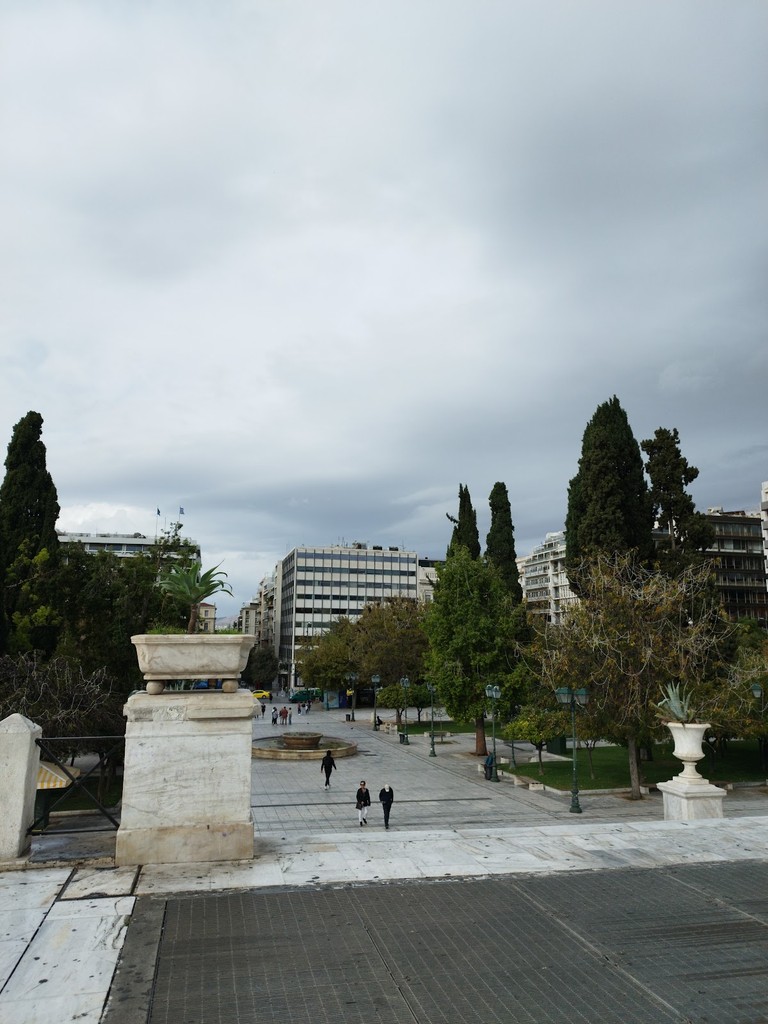
Syntagma Square (Source: Google Maps)
Syntagma Square, known as the heart of modern Athens, is a vibrant public space that serves as a hub for political and social activity. It is home to the Hellenic Parliament, where the changing of the Evzones guard takes place. This ceremonial event is a nod to Greece's military history, with guards dressed in traditional uniform, complete with the distinctive foustanella skirt and tsarouchi shoes. The square is surrounded by cafes, shops, and important buildings, making it a lively spot for both locals and tourists. Visitors can also enjoy the view of the National Garden, which provides a beautiful contrast to the urban environment.
Zappeion Hall
Exit the National Garden to visit the Zappeion Hall, an impressive neoclassical building used for meetings and ceremonies, showcasing Greek architectural elegance.

Zappeion Hall (Source: Google Maps)
Zappeion Hall is an exemplary neoclassical building located in the heart of Athens. Designed by architect Theophil Hansen and completed in 1888, it was initially intended as a venue for the revival of the Olympic Games. Its elegant colonnades and lush gardens make it a significant architectural landmark. The hall has hosted numerous important events, including diplomatic meetings and exhibitions, reflecting its cultural importance. Its grand interior features a stunning atrium and beautiful frescoes, showcasing Greek artistic heritage. The Zappeion is not only a symbol of modern Athens but also a testament to the city’s commitment to preserving its historical legacy.
National Garden of Athens
Just a short walk from Syntagma Square, the National Garden offers a peaceful oasis with lush greenery and historical monuments, perfect for a leisurely stroll.

National Garden of Athens (Source: Google Maps)
The National Garden of Athens is a serene oasis nestled in the city center, providing a peaceful retreat from the urban hustle. Established in the 19th century, it covers 15.5 hectares and features a variety of plants, trees, and flowers native to Greece and beyond. The garden is home to several historical monuments, including ancient ruins and a small zoo. It serves as a green lung for Athenians and visitors alike, offering shaded pathways, tranquil ponds, and picturesque benches. The garden is not only a place for relaxation but also a space for cultural events and exhibitions, reflecting the city’s commitment to preserving nature amidst urbanization.
Arch of Hadrian
Adjacent to the Temple of Olympian Zeus, the Arch of Hadrian stands as an ancient gateway, symbolizing the boundary between the old city and the Roman quarters.

Arch of Hadrian (Source: Google Maps)
The Arch of Hadrian, built in 132 AD, is an impressive monument that served as a gateway between the ancient city of Athens and the Roman quarter. It was erected in honor of the Roman Emperor Hadrian, symbolizing the cultural and architectural shift during his reign. The arch stands 18 meters tall and features Corinthian columns and intricate inscriptions that celebrate Hadrian's contributions to the city. This landmark exemplifies the fusion of Greek and Roman architectural styles, showcasing the grandeur of the era. Today, it remains a popular tourist attraction, offering insight into Athens' historical transformation and the enduring legacy of its ancient past.
Temple of Olympian Zeus
A short walk away, marvel at the ruins of the Temple of Olympian Zeus, once the largest temple in Greece, dedicated to the king of the Olympian gods.
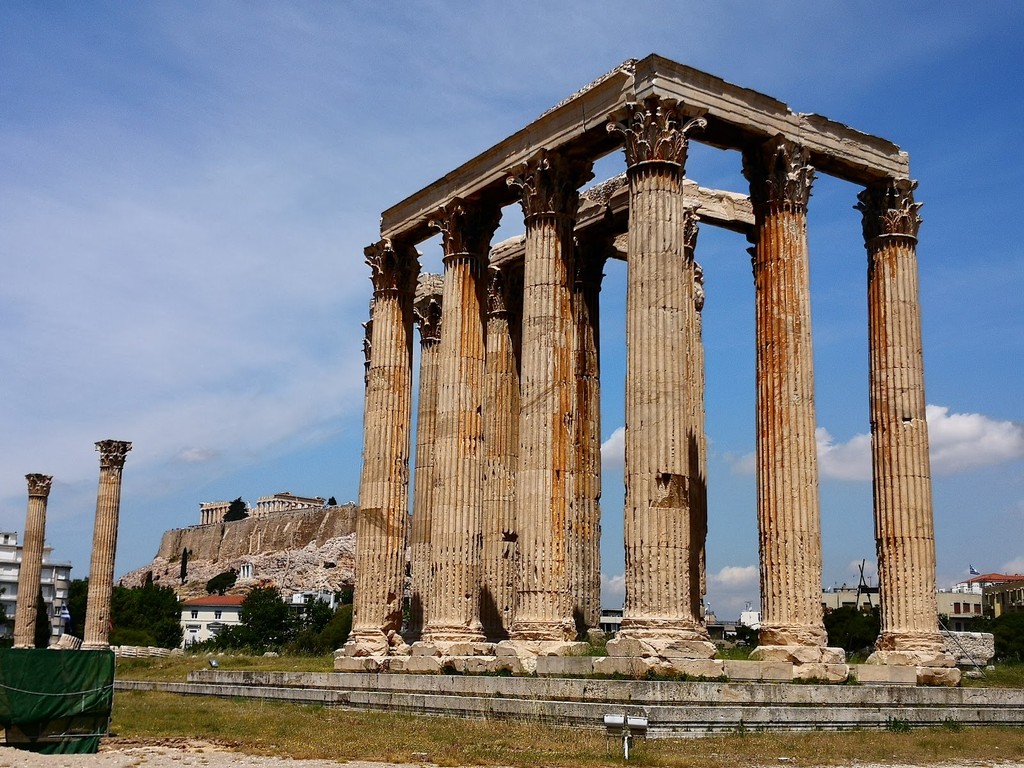
Temple of Olympian Zeus (Source: Google Maps)
The Temple of Olympian Zeus, also known as the Olympieion, was once the largest temple in Greece, dedicated to the king of the Olympian gods, Zeus. Construction began in the 6th century BC but was not completed until the 2nd century AD. The temple originally housed a massive statue of Zeus, made of ivory and gold, which was one of the Seven Wonders of the Ancient World. Today, visitors can see the impressive ruins, including 15 of the original 104 columns that stood 17 meters high. The site reflects the grandeur of ancient Greek architecture and the religious significance of the temple in Athenian society, making it a must-visit for history enthusiasts.
Acropolis Museum
Head towards the Acropolis Museum, a modern architectural gem housing ancient artifacts from the Acropolis, providing insight into Athens' rich history.
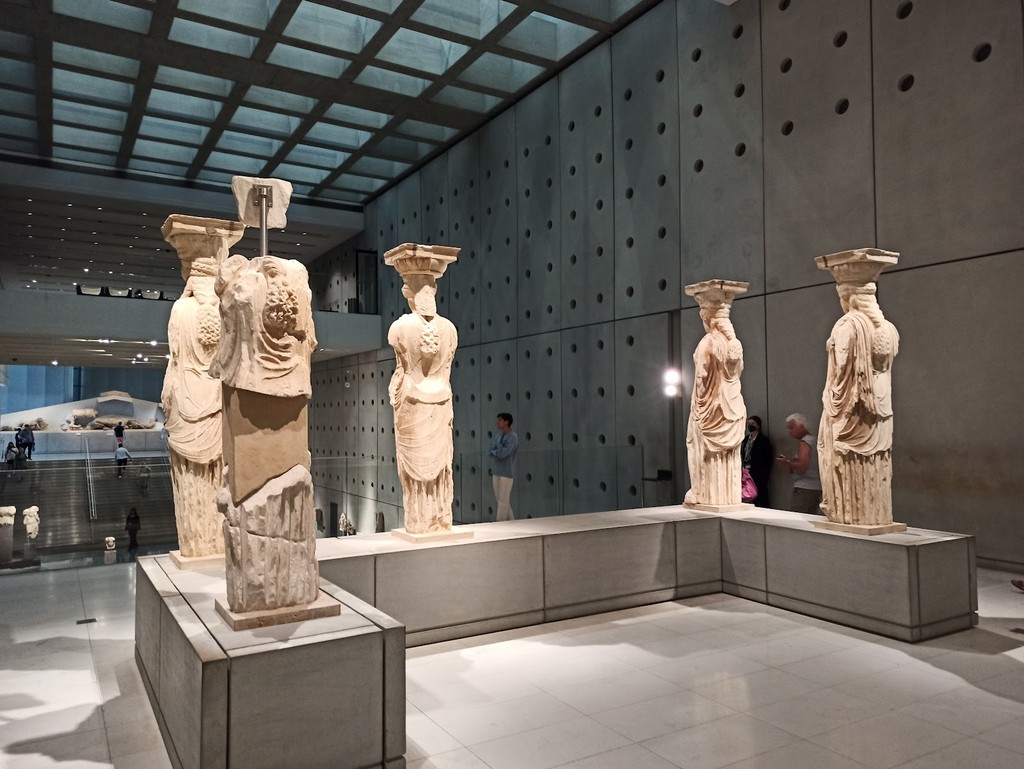
Acropolis Museum (Source: Google Maps)
The Acropolis Museum, inaugurated in 2009, is a modern architectural masterpiece that houses an extensive collection of artifacts from the Acropolis of Athens. Designed by architect Bernard Tschumi, the museum's structure is a blend of contemporary design and ancient heritage, featuring glass floors that reveal archaeological findings beneath. The museum showcases significant pieces, including the Parthenon friezes and other sculptures, providing insight into the artistic achievements of ancient Greece. Its layout is designed to enhance the visitor experience, guiding them through the history of the Acropolis and its cultural significance. The museum serves as an educational hub, fostering appreciation for Greece's rich past.
Acropolis of Athens
Ascend to the Acropolis, the iconic hilltop citadel featuring the Parthenon and other classical structures, offering breathtaking views of the city.

Acropolis of Athens (Source: Google Maps)
The Acropolis of Athens is an ancient citadel perched on a rocky outcrop, symbolizing the glory of classical Greece. Dominated by the Parthenon, a temple dedicated to the goddess Athena, the Acropolis was the center of Athenian democracy and culture. The site also includes other significant structures, such as the Erechtheion and the Temple of Athena Nike, each showcasing exquisite architectural details. The Acropolis has been a UNESCO World Heritage site since 1987, recognized for its historical and cultural importance. It offers breathtaking views of Athens and is a testament to ancient Greek ingenuity and artistry, drawing millions of visitors each year who seek to connect with its storied past.
Areopagus Hill
Descend to Areopagus Hill, a significant site in ancient Athens known for its historical trials and panoramic views of the Acropolis and the city below.
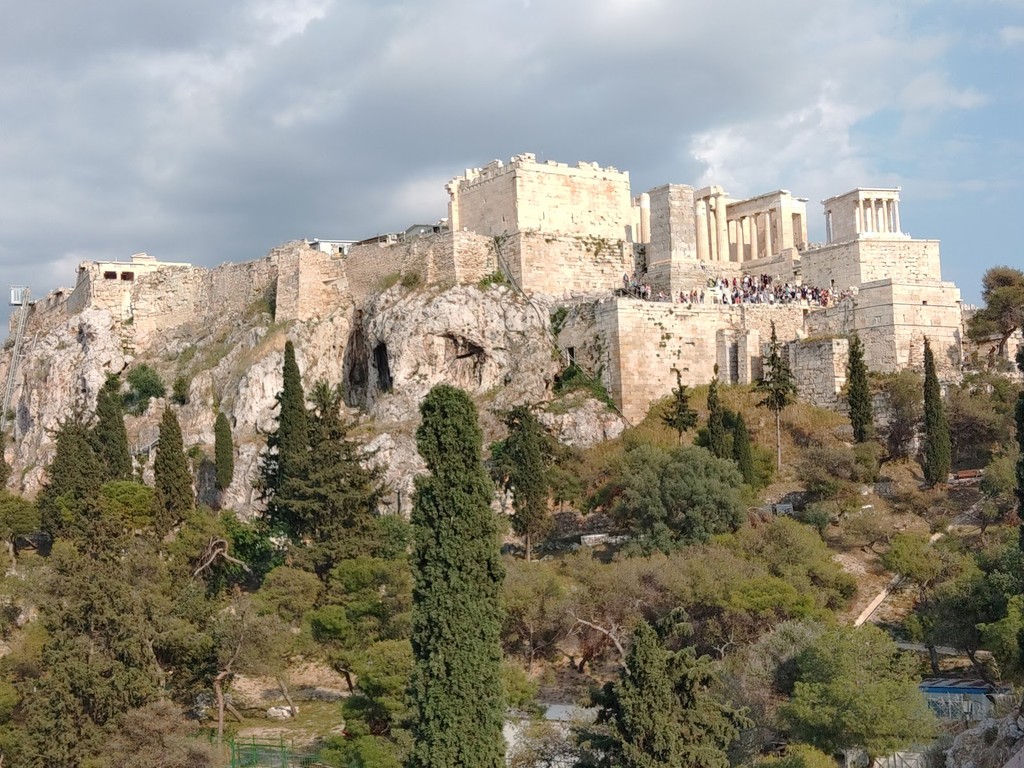
Areopagus Hill (Source: Google Maps)
Areopagus Hill, known as the site of the ancient court of the Areopagites, holds great historical significance in Athens. It is associated with important trials, including that of Socrates, and serves as a symbol of Athenian democracy and justice. The hill rises above the Agora and offers panoramic views of the Acropolis and the surrounding city. Its rocky terrain and natural beauty make it a popular spot for both tourists and locals. In ancient times, it was a gathering place for philosophers and political leaders, reflecting its role in shaping Athenian thought and governance. Today, Areopagus Hill remains a place of reflection and exploration of Athens' rich heritage.
Ancient Agora of Athens
Conclude your tour at the Ancient Agora, the former center of Athenian public life, where you can explore ruins, the reconstructed Stoa of Attalos, and the Temple of Hephaestus.
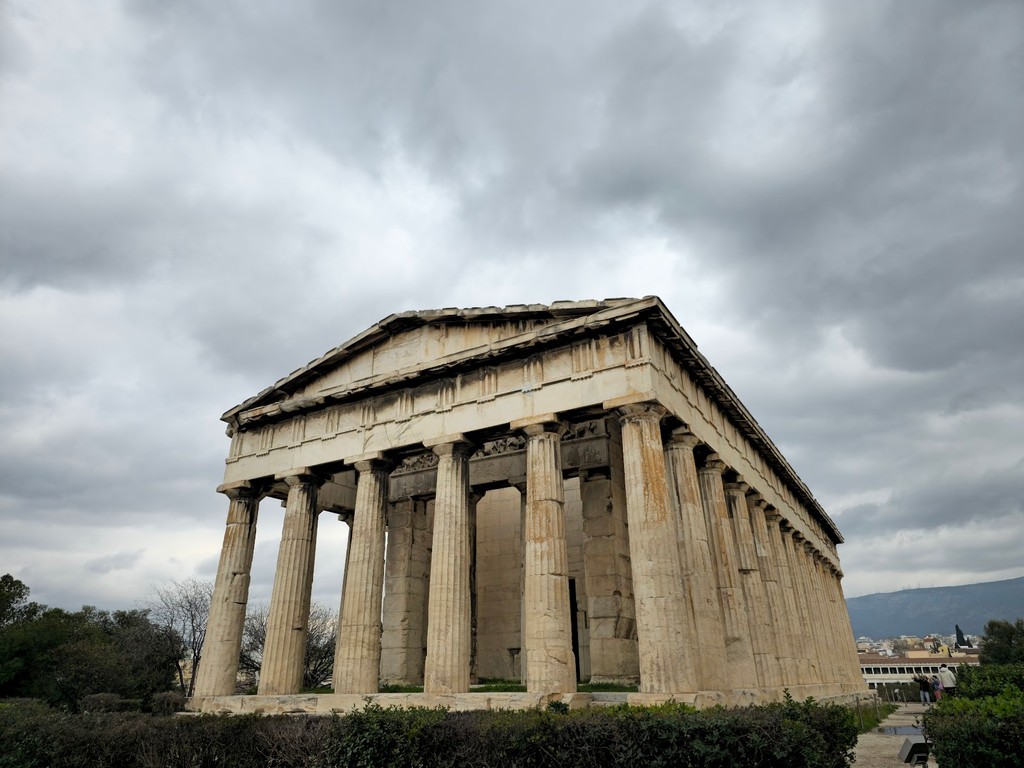
Ancient Agora of Athens (Source: Google Maps)
The Ancient Agora of Athens was the heart of public life in ancient Athens, serving as a marketplace, political center, and social hub. It was home to various important buildings, including the Stoa of Attalos, which was reconstructed in the 20th century and now houses a museum. The Agora was a place where citizens gathered to discuss politics, philosophy, and commerce, reflecting the democratic ideals of ancient Athens. Key structures also include the Temple of Hephaestus, one of the best-preserved ancient temples, dedicated to the god of craftsmanship. The site is rich in archaeological remains, offering visitors a glimpse into the daily life and values of Athenian society, making it an essential stop on any exploration of the city.

Your travels, your rules.
Create your own Free Walking Tours.
Set your preferences, distances and anything you want to do or see.
Completely free, no payment required.